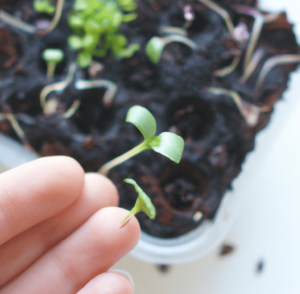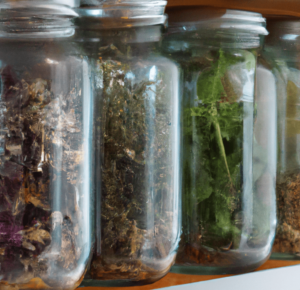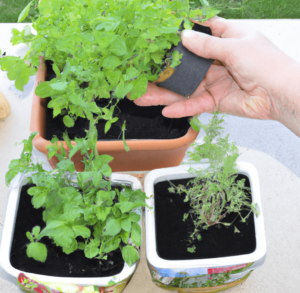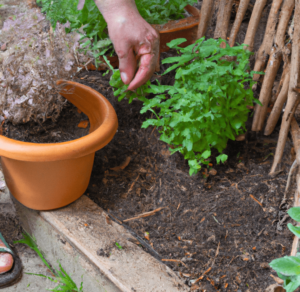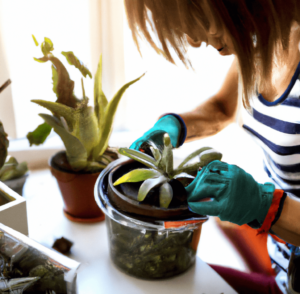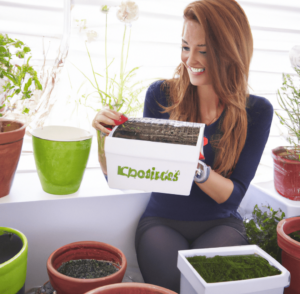Many individuals enjoy gardening as a pastime because it enables them to connect with nature and enhance the attractiveness of their houses. Gardening may be a rewarding activity, regardless of whether you live in a hot, humid climate, a cool, rainy climate, or somewhere in between.
We’re giving you our favorite tips for successful gardening in any climate.
Understanding Your Climate
Understanding your local climate for gardening involves taking into account a variety of crucial characteristics, including soil, temperatures, and the particular plants that grow there. You may choose the best plants for your garden and make sure they can thrive and flourish by being aware of the climate in your location. Then, you can learn about how to compost for beginners to choose the best fertilizer for your climate.
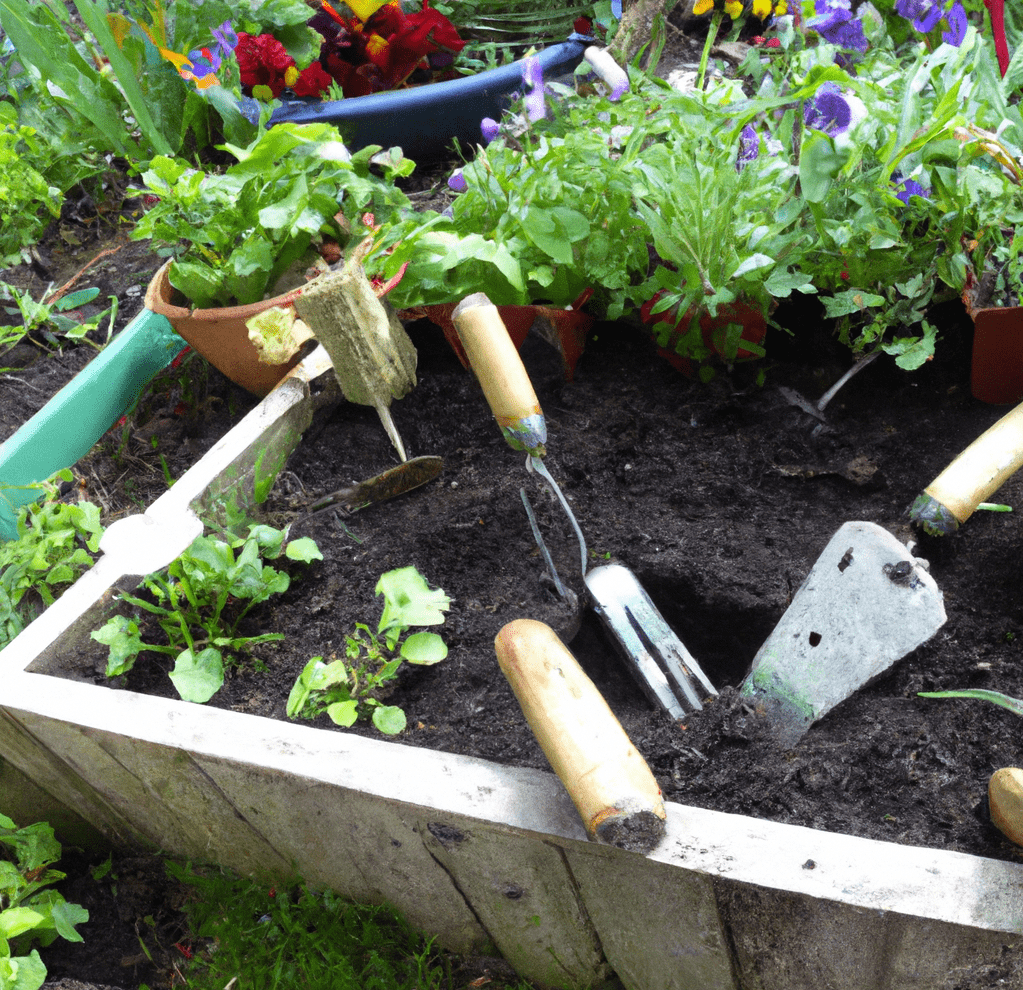
Explanation of the Different Climate Zones and How To Determine Your Zone
Knowing the climate zone where you live is one of the first tips for successful gardening in any climate. Climate zones, which are used to identify which plants would thrive in a specific place, are established based on average temperature and precipitation trends. This knowledge is essential for picking the right plants for your garden, knowing when to plant them, and knowing how to take care of them.
You can use a variety of tools, such as the USDA Plant Hardiness Zone Map, which is based on a region’s average lowest temperature, to figure out your climate zone. Additionally, you can use internet tools and resources, such as regional gardening websites, extension organizations, garden centers, or other gardening guides to determine your climate zone. It’s critical to take each plant’s individual requirements into account while planting.
For instance, although some plants prefer warmer temperatures and more protection from the sun, others prefer cooler temperatures and more carbon dioxide. Your garden’s success will be aided by your knowledge of your climate zone and the unique requirements of the plants you intend to grow.
The Typical Weather Patterns, Temperature, and Precipitation for Each Zone
Understanding the regular weather patterns, temperatures, and precipitation for your particular gardening zone is one of our top tips for successful gardening in any climate. Given that various plants have varying requirements for temperature and precipitation, this information will assist you in choosing the ones that will thrive in your environment.
The USDA has classified the country into 11 distinct gardening zones, each with its own distinct range of climatic conditions and patterns of precipitation. The types of plants that can be successfully cultivated will depend on the usual temperatures in your area as well as the type of soil that is present. For instance, certain plants might suffer in hot summer climates, while others might not be able to tolerate freezing winter climates.
Additionally, a region’s precipitation volume will affect the soil’s moisture content, which will have an effect on plant development. You may choose the best plants for your garden and be sure they can thrive and flourish by taking the time to learn the normal weather patterns, temperatures, and precipitation in your gardening zone. This information will also help in your planning and preparation for any prospective weather-related difficulties, such as a drought or an abundance of rain.
How To Use This Information To Choose the Right Plants for Your Area
Temperatures, seasons, soil, and environment are all crucial considerations when choosing plants for your region. How you can use this knowledge to make an informed choice is as follows:
- Temperatures: Be sure to select plants that can withstand the region’s typical temperatures. While some plants can endure lower temperatures, others are more heat-tolerant. Find out the lowest and highest temperatures that your plants can withstand.
- Seasons: Take into account the length of your growing season while selecting plants so that they can develop and blossom before the first frost.
- Soil: Since every plant has a different requirement for soil, it’s important to select plants that will flourish in your particular soil. While some plants love moist soil, others do well in well-drained soil.
- Climate: The type of plants that will thrive best in your location will be largely influenced by the local climate. When selecting plants, take into account elements such as wind, humidity, and rainfall. While some plants enjoy warm, muggy climes, others like cooler, drier environments.
Soil Preparation
For plants to grow well, the soil needs to be prepared, especially in arid locations during the warm season. Making sure the soil is well-draining, healthy, and has enough moisture to sustain plant growth is crucial in these circumstances:
- Consider the quantity of sunlight and shadow your plants will receive while choosing the best spot.
- Find out about the soil’s pH balance, nutritional content, and other qualities that might affect plant growth by testing it.
- Compost or well-rotted manure is good organic material to add to the soil to increase its fertility and water-holding ability.
- Use plants that can withstand dryness because they are better suited to growing in arid conditions.
- To preserve moisture and minimize water loss, take into consideration installing irrigation systems or mulching.
Explanation of the Importance of Soil Preparation
The success of your plants can be considerably impacted by the preparation of the soil, which is a crucial phase in the gardening process and is one of our tips for successful gardening in any climate because it:
- Supports Plant Growth: Healthy soil gives plants the nutrition and framework they need to develop and thrive. This comprises the proper pH balance, sufficient moisture, and effective drainage.
- Matches Climatic Zones: Depending on the climate zones in your area, different types of soil preparation are required. Knowing your growing area will help you decide what kind of soil preparation is required to give your plants the greatest possible growing circumstances.
- Increases Growing Season: Proper soil preparation helps extend your plants’ growing season. Plants will be better able to take advantage of the growing season, mature more quickly, and produce more fruit or flowers with the proper soil preparation.
- Success in the garden is improved: You can improve your chances of having a successful garden by properly preparing the soil. Keeping your plants healthy means avoiding common problems like pests and illnesses that are spread through the soil.
Soil preparation is an essential phase in gardening and is essential in our tips for successful gardening in climate.
Tips for Testing and Improving Soil Quality
Another one of our tips for successful gardening in any climate, it’s crucial to routinely examine and enhance the soil in your gardening space to provide the greatest growing conditions for your plants:
- Test the soil frequently to find out its pH level, nutritional content, and other elements that could affect plant growth.
- The pH of your soil can be adjusted if it is too high or low by adding the right sort of amendment, such as lime for a high pH or sulfur for a low pH.
- Compost or well-rotted manure are two organic materials that can be added to the soil to help it become more fertile and capable of holding more water.
- Pick the proper plants: Take into account using plants that are adapted to the local climate and soil.
- Mulching: Mulching can improve soil quality and plant growth by controlling soil temperatures and preserving moisture.
How To Choose the Right Fertilizer and Mulch
To ensure that your plants develop wholesome and robustly, selecting the appropriate fertilizer and mulch is in our tips for successful gardening in any climate as well:
- Type of Plants: Consider the sort of plants you are planting and the nutrients they require when choosing a fertilizer. While some plants prefer fertilizers high in nitrogen, others require more phosphorus or potassium.
- Mulch: Mulch enhances soil structure, inhibits weed growth, and aids in controlling soil temperature and moisture levels. Think about the kind of mulch that will benefit your plants the most, such as inorganic choices like rubber or stone or organic ones like wood chips or leaves.
- Carbon-Nitrogen Ratio: When choosing mulch, the carbon-nitrogen ratio should be taken into account. A mulch with a low carbon-to-nitrogen ratio will decompose more quickly and produce results more quickly, whereas a mulch with a high ratio will take longer to decompose and may bind up crucial nutrients in the soil.
Watering
Watering is an important part of gardening because it gives plants the moisture they need to stay strong and healthy. Proper watering can guarantee that plants receive the amount of water they require and stop the soil from getting too dry. As one of our tips for successful gardening in any climate, keep these in mind:
- Frequency: How frequently you need to water your plants will depend considerably on the type of soil in the location where you are gardening. While heavy or clay-like soil needs more frequent watering, soil with adequate drainage needs less frequent watering.
- Temperatures: The air and soil temperatures will also have an impact on how frequently you should water your plants. Plants normally require more water when it’s hot outside, while they require less when it’s cold outside.
- Area: How frequently your plants need to be watered will also depend on where they are located. Sunlight will cause the soil to dry up more quickly, thus plants in a sunny region will require more water than those in a shaded area.
In general, it is preferable to water your plants deeply and sparingly as opposed to lightly every day. Your plants will become more resistant to drought conditions as a result of the encouragement of deeper root growth in the soil.
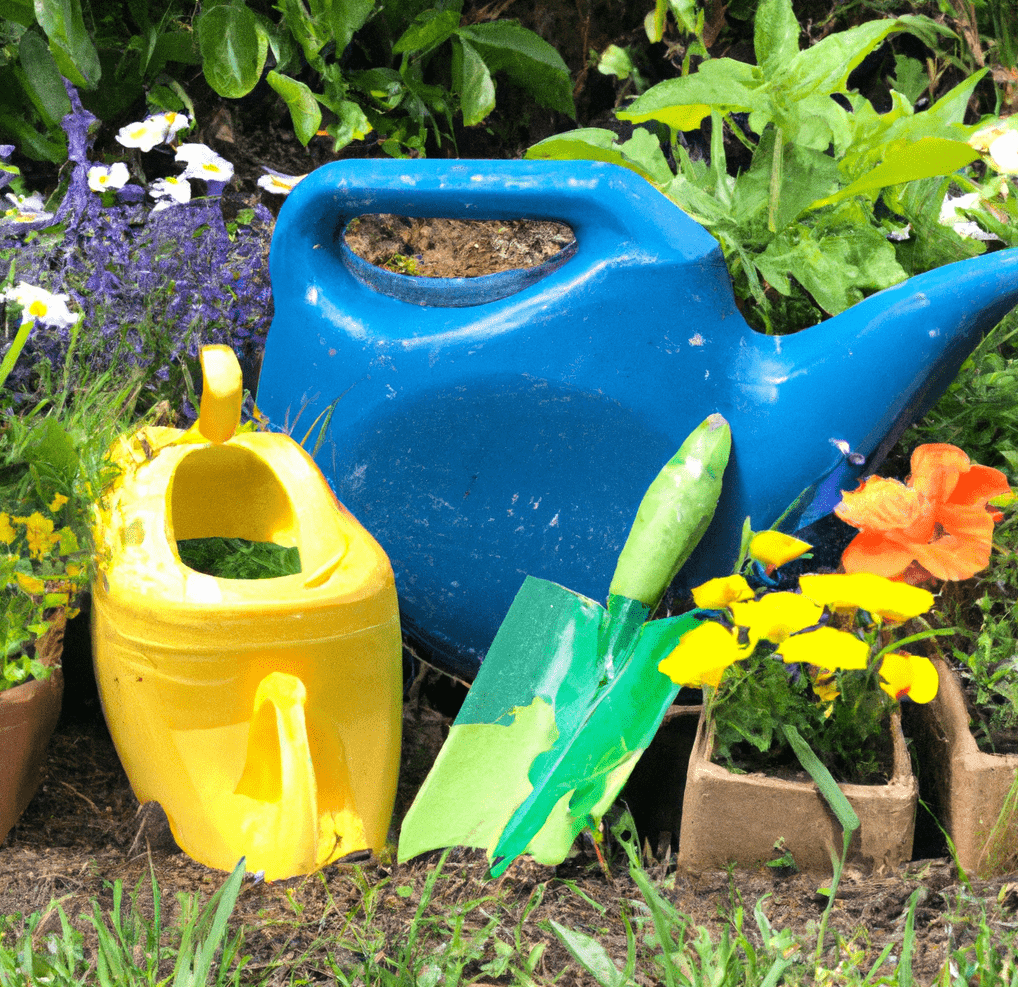
Explanation of the Importance of Proper Watering
The health and growth of plants depend on proper watering. This is one of our tips for successful gardening in any climate but remember:
- It is necessary for survival and aids in the absorption of vital elements, such as carbon.
- Plants will eventually wilt and die without enough water, resulting in lower crop yields and higher crop quality.
- Using appropriate watering techniques promotes the development of sturdy roots that give the plant structure and support.
- Effective irrigation helps prevent soil erosion, maintain soil moisture, and slow the spread of pests and diseases.
- It’s crucial to strike a balance because excessive watering can sometimes be harmful, contributing to root rot, for example.
Tips for Conserving Water and Preventing Over-Watering
It’s crucial to conserve water and avoid overwatering because gardening can be a water-intensive pastime:
- Understand your plants’ water needs: Understanding the water requirements of different plants is essential to preventing overwatering.
- Assessing Soil Moisture: To find out if your plants need water, regularly check the soil moisture level. It’s time to water if the soil feels dry a few inches down where your finger is inserted.
- Temperature-based watering adjustments: In warmer weather, you might need to water more regularly because high temperatures can make the soil dry out more quickly.
- Watering the roots rather than the leaves To prevent the spreading of disease, it’s best to irrigate your plants’ roots rather than their leaves. Watering the plant from the base up, rather than from above, will help you achieve this.
- Garden Mulch: Your garden area can benefit from having a layer of mulch added because it will assist retain soil moisture and lessen the need to irrigate.
You may conserve water, avoid overwatering, and encourage healthy plant growth in your garden by paying attention to these suggestions.
How To Use Irrigation Systems and Rain Barrels
So can water your plants effectively and conserve water by using rain barrels and irrigation systems. This is one of the tips for successful gardening in any climate that regardless of the time of year or the weather, may assist in making sure that your plants get the proper amount of water:
- Plants: The sort of plants you are growing will influence the type of irrigation system you need as well as the amount of water you require. While some plants, like succulents, require relatively little water, others, like veggies, require more.
- Temperatures: How frequently your plants need to be watered depends on the air and soil temperatures. Plants normally require more water when it’s hot outside, while they require less when it’s cold.
- Season: The time of year will also influence how frequently you should water your plants. Plants require more water during the growing season than they do during the dormant period.
- How frequently you need to water your plants will depend considerably on the type of soil in the location where you are gardening. While heavy or clay-like soil needs more frequent watering, soil with adequate drainage needs less frequent watering.
- Climate: How frequently you need to water your plants will also depend on the climate in the location where you are gardening. Plants will require more water in locations with a dry climate than they will in areas with a wet climate.
The best option to collect and store rainwater for use in your garden is in rain barrels. In locations with water limitations or during droughts, they are extremely helpful. On the other side, irrigation systems can be used to automate watering and make sure that your plants get the proper amount of water, even while you aren’t around. You can conserve water, lower your water cost, and maintain the health and vigor of your plants by employing both irrigation systems and rain barrels.
Pest and Disease Control
Particularly in warm, dry conditions, pests and diseases can be a serious danger to the well-being and productivity of plants. Use the right pest and disease control strategies to make sure your plants stay healthy:
- Choose Plants Resistant to Disease: one of our tips for successful gardening in any climate is choosing plants that are resilient to the prevalent diseases in your region. By doing this, you can stop or slow the spread of diseases in your garden.
- Check for pests: Check your plants frequently for evidence of pests, such as holes in the leaves or sticky stains.
- Implement cultural controls: Cultural controls can help to lower the risk of pest and disease infestations by ensuring correct soil management, hydration, and sanitation.
- Utilize physical restraints: Physical measures like handpicking bugs or erecting obstacles can help control pest numbers.
- Think about chemical controls: Pests and illnesses can be managed chemically with the use of fungicides and insecticides. Following the directions on the label is crucial, and these products should only be used as necessary.
Explanation of Common Pests and Diseases That Affect Gardens
Many people find gardening to be a fulfilling hobby, but it is not without its difficulties. Many different diseases and pests can impact a plant’s growth and health, especially in certain climate zones but you can use our tips for successful gardening in any climate to get rid of pests and diseases.
Tips for Preventing and Controlling Pests and Diseases
- Soil Preparation and Management: To increase plant health and lessen pest and disease issues, ensure correct soil preparation and management, including soil testing, fertilizer, and appropriate pH levels.
- Proper Plant Selection: Select plants that are adapted to the local environment and growing circumstances. Where pests and diseases are prevalent, consider selecting resistant types.
- Proper Temperature Control: Take into account the best temperatures for your plants and make sure they aren’t overly hot or cold, which might take down their defenses and make them more vulnerable to illnesses and pests.
- Proper Spacing: Ensure that plants are properly spaced to allow for adequate air circulation, which can lower the incidence of illness.
- A tidy and sanitary gardening area: To lessen the accumulation of pests and diseases in the gardening area, regularly clear fallen leaves and other waste. You should also sterilize your tools and equipment after each use to stop the spread of disease.
How To Choose and Use Pesticides and Other Control Methods
When gardening, one must strike a balance between the need to keep plants safe from damaging pests and diseases and the desire to have a flourishing garden. Using pesticides is one strategy, but it’s crucial to think about any potential effects on the environment and public health.
Alternatives can also be successful in lowering insect populations and fostering a healthy garden, including companion planting, natural predators, and careful carbon management. It’s crucial to take the demands of your garden and plants into account while selecting and utilizing pest control measures, as well as the effects on the environment.
Plant Selection
The success and aesthetic appeal of your garden can be significantly impacted by the plant choices you make. Which plants will grow in your particular climate can depend on a variety of factors, including temperatures, soil type, quality, and the particular spot of your garden. It’s important to take these aspects into account and select plant species that are appropriate for your gardening environment when choosing plants for your garden. This will make it easier to ensure that your plants may grow and thrive in your garden, resulting in a lovely and healthy environment for years to come.
How To Choose Plants That Are Well-Suited to Your Climate
Another one of our tips for successful gardening in any climate includes choosing the right plants:
- Think about the local temperatures: To choose plants that can withstand the local climate, take into account the average temperatures in your location over the various seasons as well as dramatic temperature swings.
- Zones of Plant Hardiness Research: Learn about the USDA’s plant hardiness zones, which are geographic areas separated by minimum average winter temperatures. Pick plants that will thrive in the hardiness zone where you reside.
- Take Soil Type Into Consideration: Take into account the soil type in your region, as well as its pH values, nutrient content, and moisture-retention capacities. Pick plants that can thrive in your region’s particular soil.
- Recognize Your Climate: Take note of the local climate’s rainfall patterns, humidity levels, and other elements. To ensure your plants’ survival and growth, choose ones that are adapted to these conditions.
- Consult a Professional: To help you choose plants that are suitable for your climate and growing conditions, ask a local nursery or gardening professional for advice. Based on their expertise and local knowledge, they can offer advice and recommendations.
Tips for Selecting Plants That Require Minimal Maintenance
Here are some pointers to assist you in selecting plants that need little to no maintenance:
- Temperature: Choose plants that can withstand the temperatures in your region. When choosing plants, keep in mind that some are more resistant to temperature changes than others.
- Soil: Choose plants that can flourish in the kind of soil that your garden has. The quantity of soil preparation and maintenance needed may be lessened as a result.
- Area: Take into account how much sunlight and water each section of your garden receives. While some plants enjoy the moderate shade, others prefer full light. Make sure to pick plants that will flourish in the environmental conditions of your garden.
- Gardening approach: When choosing your plants, take into account your own gardening approach. Choose plants that don’t need frequent pruning or watering if you prefer low-maintenance gardening.
You may build a lovely and low-maintenance environment that will provide you with years of happiness by taking these criteria into account when choosing plants for your garden.
How To Choose Plants That Will Provide Seasonal Interest and Beauty
- Think about the seasonal cycles: Choose plants like spring-flowering bulbs, summer perennials, and fall-fruiting shrubs that will offer beauty and seasonal interest all through the year.
- Consider the Local Temperatures: When choosing plants, take into account both the dramatic temperature swings and the region’s average temperatures. This will make it more likely that the plants you select will thrive in your region’s climate.
- The soil must match: Choose plants that can thrive in your region’s soil type, taking into account its pH levels, nutrient composition, and moisture-retention capacities.
- Think About Climate To ensure your plants’ life and growth, be aware of the patterns of precipitation, the degrees of humidity, and other climate parameters in your region. Then, select plants that are adapted to these conditions.
- Consider Seasonal Color: To give a succession of seasonal colors in your garden, choose plants with various flowering dates, such as spring bulbs, summer annuals, and fall perennials.
- Create a theme by choosing plants with like hues, textures, or forms to create a harmonious garden design. This will contribute to the creation of an aesthetically pleasing, harmonious garden that offers beauty all year long.
Bottom Line: Tips for Successful Gardening in Any Climate
Fresh vegetables, stress relaxation, and better air quality are just a few advantages of gardening, which is a rewarding hobby that connects people with nature.
In this post, we’ve covered our tips for successful gardening in any climate, such as choosing the right species, comprehending how temperature and soil conditions affect plants, and adding thoughtful garden design. Whether you are a seasoned practitioner or a novice to the activity, we hope this article has inspired you to start gardening.
Tips for Successful Gardening in Any Climate FAQs
Why is it crucial for gardening that you understand your local climate?
This makes it easier to select the ideal plants for your garden and guarantees their success.
How do I identify my gardening climate zone?
You can use resources like the USDA Plant Hardiness Zone Map, regional gardening websites, extension services, or garden centers to find out what climate zone you are in.
What role does knowing the typical weather, temperature range, and precipitation for my climate zone have?
Since different plants have varying needs for temperature and precipitation, it’s important to understand the typical weather patterns, temperatures, and precipitation for your specific gardening zone. This knowledge can help in making plans for any weather-related issues and selecting plants that will grow in your environment for DIY projects for beginners or long-term gardening plans.
What factors should I take into account when picking plants for my area?
Take into account the local climate, soil, seasons, and temperatures when selecting plants. Verify that the plants you choose can resist the area’s usual temperatures, have a good growing season, flourish in your soil type, and are adapted to your region’s specific climate variables, such as wind, humidity, and rainfall.
How can I get my soil ready for gardening?
Consider the amount of sunlight and shade your plants will receive, test the soil’s pH balance and nutritional content, add organic materials like compost or well-rotted manure to increase its fertility and water-holding capacity, use plants that can withstand dryness, and think about installing irrigation systems or mulching to keep moisture in the soil in arid climates during the warm season.
What are some pointers for growing well in any environment?
Remember to use irrigation systems and rain barrels to efficiently water your plants while preserving water, take into account the sort of plants you are cultivating, the weather, and the season, using pest and disease prevention techniques will keep your plants healthy, and educating oneself on typical garden diseases and pests.
What should I keep in mind when using rain barrels and irrigation systems?
Your chosen plant species and how much water they require, the temperatures of the soil and the atmosphere, the season for growth, the period of the year, the soil type in the area where you’re gardening, and are gardening the local of your area.
What are some methods for preventing diseases and pests?
You can select disease-resistant plants, regularly inspect your plants for pests, put in place cultural restraints such as proper soil management, hydration, and sanitation, put up barriers or pluck bugs by hand as physical restraints, using pesticides and fungicides only when necessary.
How do I pick and apply insecticides and other tools to control illnesses and pests?
Think about balancing the need to preserve the environment and your plants from pests and disease, the requirements of your plants and garden, alternatives like natural predators, companion planting, and cautious carbon management.


